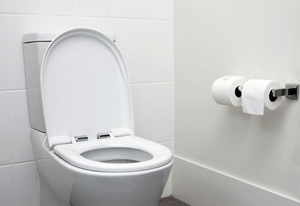The first step of solving many plumbing problems is usually turning off the water shutoff valve. If you'd like to tackle these problems successfully when they arise, start by checking out the shutoff valves in your home. Let's look at the types of valves you'll most probably come across.
Gate Valve
This valve has a machined inner mechanism. To turn it on or off, you'll have to turn its circular head, which in turn raises or lowers a metal gate. The gate blocks water flow when it's in its lowest position. Water flows freely when the gate is in its highest position. The valve should be completely open or completely closed. Opening it partially will cause it to wear away and fail over time.
Washered Valve
This is the most common water shutoff valve. You're likely to find it in your toilet, sinks and outdoor sillcocks. It comes in different sizes and is usually round or oval shaped. It has a rubber washer that compresses onto a metal seat when you turn the valve's handle to shut off water flow. The valve will leak when the washer wears out. Replacing the washer is easy, but you have to ensure you get a rightly sized one.
Ball Valve
This is the least problematic valve. You'll most likely find it under sinks and toilets. It has a straight lever handle that only makes a quarter turn. In the open position, the handle is parallel to your pipes and in the closed position, it's perpendicular. Instead of a washer, it has a machined ball with a hole. It shuts off water when it's aligned such that the hole is perpendicular to water flow.If you're proactive about keeping your plumbing system healthy, it will be beneficial to identify the types of shutoff valves you have and where they're located. To learn more about the water shutoff valve types, please contact us at Air Assurance. We've proudly served the Broken Arrow area for more than 30 years.
Our goal is to help educate our customers in the Tulsa and Broken Arrow, Oklahoma area about energy and home comfort issues (specific to HVAC systems). Credit/Copyright Attribution: “PublicDomainArchive/Pixabay”





